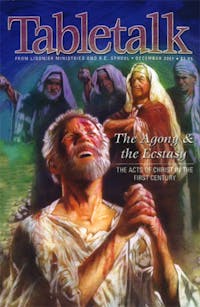
Request your free, three-month trial to Tabletalk magazine. You’ll receive the print issue monthly and gain immediate digital access to decades of archives. This trial is risk-free. No credit card required.
Try Tabletalk NowAlready receive Tabletalk magazine every month?
Verify your email address to gain unlimited access.
In order to interpret any document adequately, a basic understanding of the historical context in which it was written is important. For those interested in reading and interpreting the books of the New Testament, F.F. Bruce’s New Testament History is indispensible.
Consisting of 30 chapters, Bruce’s work may be roughly divided into three sections. The first 11 chapters provide the reader with a thorough discussion of the historical, political, cultural, and religious milieu into which Christ was born and in which the writers of the New Testament books lived, worked, and wrote. Bruce outlines the history of the various empires that ruled Palestine in the centuries before Christ, focusing on the Roman Empire at the time of His ministry. He discusses the political situation within Israel under the Herods and the priests. He also provides helpful descriptions of the various groups of the time, such as the Pharisees, Sadducees, Zealots, and Essenes.
Chapters 12 to 27 approach the events described in the writings of the New Testament from a historical and chronological perspective. These chapters begin with the emergence of John the Baptist and end with the last known whereabouts of the apostle Paul. This section offers insight into the people, places, and events that form the historical, geographical, and cultural context of the New Testament books.
The final three chapters deal with several issues, including the fall of Jerusalem and the effects of that catastrophe on the Jews and the early church; the successes and setbacks of the church in Rome; and Christianity in the era immediately after the deaths of the apostles.
Bruce’s work is thoroughly comprehensive without being tedious, a characteristic that has made this volume a standard textbook in many Bible colleges and seminaries. He has an inviting and engaging writing style for a world-renowned scholar, and his work should be on the desk of every serious student of Scripture and history. New Testament History is published by Doubleday.
